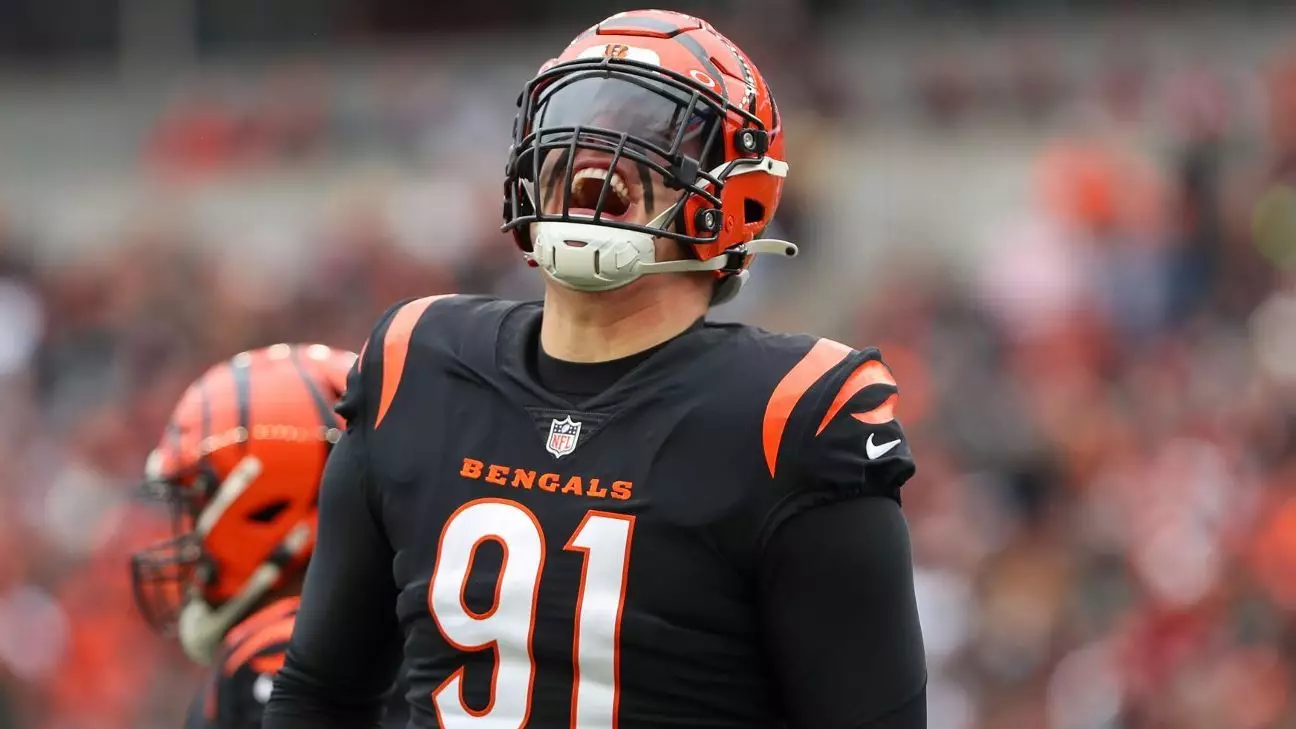In a strikingly candid statement, Cincinnati Bengals defensive end Trey Hendrickson has revealed a complex dispute regarding his contract negotiations with the organization, painting a troubling picture of communication breakdowns. Speaking through ESPN’s Adam Schefter, Hendrickson indicated that discussions halted dramatically post-NFL draft in April, sending a clear message to both the franchise and its fanbase: the lines of communication have crumbled. At the heart of this predicament is the perception that the offers on the table do not align with the vision that Hendrickson believes was promised to him if he continued to excel on the field.
Hendrickson’s grievances—rooted in a betrayal of understanding—highlight the often turbulent nature of professional sports contracts. By expressing disappointment that the Bengals are “no longer communicating,” he exposes a significant problem. How can players like Hendrickson, who aim to contribute to their team’s success, feel valued when their financial security hangs in uncertainty? This pressing issue raises questions regarding organizational transparency and the respect afforded to athletes who dedicate years of their lives to their teams.
A Performance That Deserves Recognition
The controversy surrounding Hendrickson is particularly alarming given his performance—he led the NFL last season with 17.5 sacks and earned a spot on The Associated Press All-Pro team, marking a significant achievement for himself and the Bengals. His consistency and high-level performance over his four-year tenure in Cincinnati point to a player who has fulfilled his end of the bargain. Furthermore, while other key players like Ja’Marr Chase received substantial contract extensions—Chase becoming the highest-paid non-quarterback in league history—Hendrickson’s situation underscores an unsettling reality: the disparity in treatment among acknowledged stars within the same organization.
Despite having signed a lucrative four-year, $60 million deal as a free agent in 2021, Hendrickson finds himself in a precarious situation, entering the final year of his contract without a clear path to an extension. It is vital for teams to appreciate the career cycles of their players, especially those who have demonstrated a commitment to performance. The fact that Hendrickson has requested a trade in the past also speaks volumes about the frustration borne from contract misinterpretations and unmet expectations.
The Impact of Miscommunication
Miscommunication appears to be a defining theme in Hendrickson’s negotiations. He pointedly criticized Bengals executive Katie Blackburn’s remarks made at the NFL annual meeting, which implied that the onus of satisfaction resides on the player’s shoulders. In his opinion, her statement reflected a lack of accountability from the front office in these negotiations. Miscommunication can destroy relationships and ruin opportunities, and it is crucial for the Bengals to prioritize better collaborative efforts—for both their players and the organization at large.
Moreover, this situation illustrates the delicate balance that organizations must maintain. It isn’t just about contracts; it’s about fostering a culture of open dialogue and mutual respect. In today’s era of sports, players are increasingly vocal about their needs and expectations. Organizations that fail to engage in meaningful communication risk losing not only their players but also the very heart of their franchise’s spirit.
The Impending Urgency
Trey Hendrickson is just one player among many within the Bengals’ roster facing contractual uncertainties. The looming organized team activities later this month add an element of urgency to this ongoing saga. As players prepare for a challenging season ahead, the way Hendrickson’s contract situation is handled may send ripples through the entire team dynamic. Will the Bengals act swiftly to resolve this mounting tension, or will these unresolved issues affect team morale and performance on the field?
With Hendrickson indicating he’s not looking to be the highest-paid defensive end but instead wishing to strike a deal that reflects his contributions, the call for urgency is palpable. Negotiation dynamics often offer insights into organizational culture and player treatment, and if Cincinnati hopes to maintain its competitive edge, proactive solutions must be sought sooner rather than later. The resolution of this contract dispute will be closely watched, not only for its implications on Hendrickson’s future but also as a litmus test for the Bengals’ approach to player relations moving forward.

